- Raspberries and Gooseberries: Spring Treatment for Diseases and Pests
- 1. Pruning and Sanitizing
- 2. Soil Management
- 3. Disease Prevention
- 4. Pest Control
- 5. Mulching
- 6. Watering
- 7. Regular Monitoring
- Conclusion
- Importance of Spring Treatment
- Preventing Diseases
- Controlling Pests
- Boosting Plant Health
- Promoting Fruit Production
- Timing and Approach
- Conclusion
- Common Diseases in Raspberries
- Preventive Measures for Disease Control
- 1. Site Selection
- 2. Crop Rotation
- 3. Clean Cultural Practices
- 4. Pruning and Thinning
- 5. Fertilization and Irrigation
- 6. Sanitation
- 7. Planting Disease-Resistant Varieties
- 8. Monitoring and Early Detection
- 9. Biological Controls
- 10. Proper Storage and Disposal
- Steps to Protect Raspberries from Pests
- 1. Remove debris and weeds around the raspberry plants
- 2. Prune and thin the raspberry canes
- 3. Monitor for signs of pests
- 4. Implement physical barriers
- 5. Use organic pest control methods
- 6. Practice good garden hygiene
- 7. Rotate crops
- 8. Regularly inspect and maintain the plants
- 9. Follow proper harvesting practices
- Gooseberries: Common Pests and Diseases
- Pests:
- Diseases:
- Effective Spring Treatment for Gooseberries
- 1. Pruning
- 2. Mulching
- 3. Fertilizing
- 4. Disease and Pest Control
- 5. Watering
- 6. Harvesting
- Currants: Diseases and Pests to Watch Out For
- Diseases
- Pests
- Essential Spring Treatment for Currants
- Pruning
- Fertilizing
- Protecting Against Pests
- Watering
- Staking
- Questions and Answers:
- What are the common diseases and pests that affect raspberries, gooseberries, and currants in the spring?
- How can I identify powdery mildew on my raspberry plants?
- What can I do to prevent powdery mildew on my gooseberry bushes?
- How do I control aphids on my currant plants?
- What are some methods for managing mites on raspberry plants?
- What are the signs of fruit worm infestation on gooseberry plants?
- How can I prevent fruit worm infestation on my currant bushes?
- Videos: Growing Currants: Troubleshooting 4 Common Problems
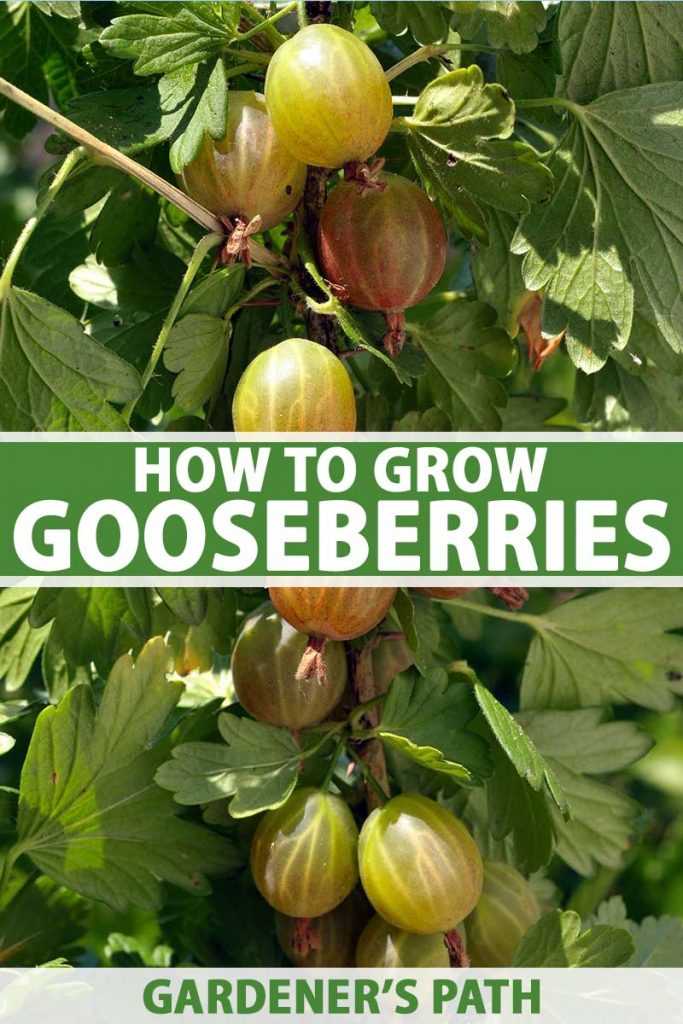
As spring approaches, gardeners and fruit enthusiasts are eagerly preparing for the upcoming season. For those who have raspberries, gooseberries, and currants in their gardens, it is essential to take proper precautions to protect these plants from diseases and pests. These small fruits are not only delicious but also vulnerable to various threats that can hinder their growth and productivity.
Diseases
Raspberries, gooseberries, and currants are susceptible to a range of diseases that can significantly affect their health. One common disease that affects these plants is powdery mildew, which appears as a white powdery substance on the leaves and stems. Additionally, gray mold, caused by a fungus, can lead to rotting fruit. To prevent the spread of diseases, it is crucial to remove and dispose of infected leaves and branches.
Pests
Like many plants, raspberries, gooseberries, and currants can also be targeted by various pests. Aphids, small insects that feed on the sap of plants, are a common pest that can damage the leaves and stems. Other pests, such as fruit flies and sawflies, can cause damage to the fruit. Regularly inspecting the plants for signs of infestation and implementing appropriate measures, such as using insecticidal soap or sticky traps, can help control these pests.
Protective Measures
To ensure the health and productivity of raspberries, gooseberries, and currants, it is crucial to implement preventative measures. Pruning the plants in early spring helps increase air circulation and reduces the risk of diseases. Applying a layer of organic mulch around the base of the plants can help retain moisture and suppress weed growth. Additionally, regularly monitoring the plants for any signs of disease or pests and taking immediate action can prevent further damage.
In conclusion, protecting raspberries, gooseberries, and currants from diseases and pests during the spring season is essential for a successful harvest. By being vigilant and implementing appropriate measures, gardeners can enjoy healthy and abundant crops of these delicious fruits.
Raspberries and Gooseberries: Spring Treatment for Diseases and Pests
Raspberries and gooseberries are popular fruiting shrubs that can be vulnerable to a variety of diseases and pests. Taking steps to protect these plants in the springtime can help ensure a healthy and fruitful harvest later in the year.
1. Pruning and Sanitizing
Start by pruning your raspberry and gooseberry plants in early spring, before new growth begins. Remove any dead or damaged canes, as well as any that show signs of disease or pests. It’s important to sanitize your pruning tools between cuts to prevent the spread of diseases. Simply wipe the blades with a cloth soaked in rubbing alcohol or a solution of bleach and water.
2. Soil Management

Ensure your plants are growing in well-draining soil with a pH level between 5.5 and 6.5. Incorporate organic matter, such as compost or well-rotted manure, into the soil to improve its structure and fertility. This will help promote healthy root growth and overall plant vigor.
3. Disease Prevention
Apply a fungicide to the plants in early spring to prevent diseases such as powdery mildew, leaf spot, and rust. Be sure to follow the instructions on the product label for proper application and safety precautions. Regularly inspect your plants throughout the growing season for any signs of disease, and promptly remove and destroy affected plant material to prevent further spread.
4. Pest Control
Protect your raspberry and gooseberry plants from common pests like aphids, spider mites, and fruit worms. Insecticidal soaps or oils can be used to control these pests, but be sure to follow the instructions carefully to avoid harming beneficial insects. Additionally, placing sticky traps or netting over your plants can help deter pests and protect your fruit.
5. Mulching
Apply a layer of organic mulch, such as straw or wood chips, around the base of your plants in the springtime. Mulch helps to retain moisture, suppress weeds, and regulate soil temperature. It also acts as a barrier, preventing soilborne diseases from splashing onto the foliage during rainfall.
6. Watering
Keep your raspberry and gooseberry plants well-watered throughout the growing season, especially during periods of drought. Irrigate at the base of the plants to avoid wetting the foliage, as this can promote the development of diseases. Consider using a drip irrigation system or soaker hoses to deliver water directly to the root zone.
7. Regular Monitoring
Monitor your plants regularly for any signs of stress, disease, or pest infestation. Early detection allows for prompt treatment and can help prevent the spread of issues to other plants in your garden.
Conclusion
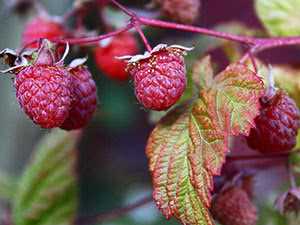
By following these spring treatment steps for diseases and pests, you can help ensure that your raspberry and gooseberry plants stay healthy and productive throughout the growing season. Regular care and attention will result in a bountiful harvest of delicious fruits.
Importance of Spring Treatment
Spring treatment is essential for the health and productivity of raspberries, gooseberries, and currants. It is a critical step in preventing diseases and pests that can harm these plants and reduce their yield. By starting the growing season with proper treatment, gardeners can ensure the plants have the best chance of thriving.
Preventing Diseases
Spring treatment plays a crucial role in preventing diseases in raspberries, gooseberries, and currants. These plants are susceptible to various fungal, bacterial, and viral infections that can cause leaf spots, blights, wilts, and fruit rot. By applying appropriate treatments in spring, gardeners can minimize the risk of these diseases spreading and damaging the plants.
Controlling Pests
Pests such as aphids, beetles, mites, and caterpillars can infest raspberries, gooseberries, and currants, causing damage to the leaves, buds, and fruits. Spring treatment helps control these pests by using insecticides or organic methods such as neem oil or insecticidal soap. Regular inspection and treatment can help keep pest populations under control and prevent significant damage to the plants.
Boosting Plant Health
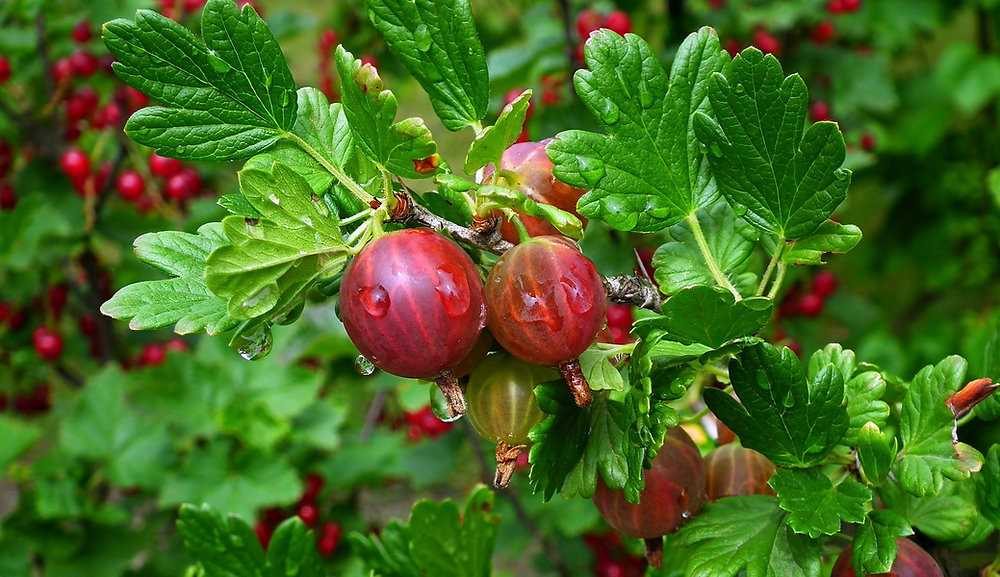
Spring treatment also aims to boost the overall health of raspberries, gooseberries, and currants. This includes providing proper nutrition through fertilization, ensuring adequate water supply, and promoting good soil health. By addressing any deficiencies or imbalances in nutrients and optimizing growing conditions, gardeners can help the plants grow vigorously and withstand diseases and pests better.
Promoting Fruit Production
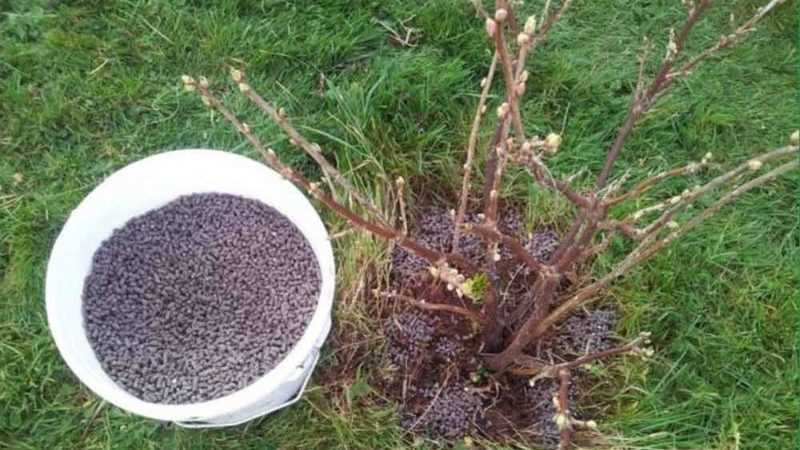
Proper spring treatment sets the stage for a successful fruiting season. By managing diseases and pests, optimizing plant health, and providing optimal growing conditions, gardeners can promote abundant fruit production. Healthy plants are more likely to produce high-quality fruits, ensuring a bountiful harvest.
Timing and Approach
Spring treatment should be done at the appropriate time when plants are coming out of dormancy but before new growth begins. It typically involves a combination of pruning, cleaning up debris, applying fungicides or insecticides, and providing necessary nutrients. Following recommended guidelines and adjusting the treatment approach based on specific plant needs is crucial for success.
Conclusion
Spring treatment is crucial for the overall health, disease prevention, pest control, and fruit production of raspberries, gooseberries, and currants. Proper timing, techniques, and a holistic approach are essential for achieving optimal results. By investing time and effort into spring treatment, gardeners can enjoy healthy plants and bountiful harvests.
Common Diseases in Raspberries
- Anthracnose: This fungal disease causes dark lesions on the canes, which can lead to dieback. It can also affect the fruit, causing small tan spots. To control anthracnose, prune and destroy infected canes and apply a copper-based fungicide.
- Gray Mold: Gray mold, caused by the fungus Botrytis cinerea, usually affects ripe or overripe fruit. It appears as a fuzzy gray mold on the fruit and can quickly spread to neighboring berries. Remove and destroy infected fruit and improve air circulation to prevent its spread.
- Root Rot: Root rot is caused by various soilborne pathogens and is characterized by stunted growth, wilting, and yellowing of leaves. To prevent root rot, ensure good drainage and avoid overwatering. Fungicide treatments may be necessary in severe cases.
- Cane Blight: Cane blight, caused by the fungus Leptosphaeria coniothyrium, results in dark purple to black lesions on the canes. Prune and destroy infected canes to prevent the spread of the disease.
- Powdery Mildew: Powdery mildew is a fungal disease that appears as a white, powdery coating on the leaves and fruit. It can cause leaf curling and distortion. To control powdery mildew, apply a sulfur-based fungicide and ensure good air circulation around the plants.
Raspberry plants are susceptible to various diseases, and it’s important to be vigilant in order to prevent their spread. Regularly inspect your plants for signs of disease and take appropriate action to protect your crop.
Preventive Measures for Disease Control
To effectively control diseases in your raspberry, gooseberry, and currant plants, it is essential to implement preventive measures. By following these guidelines, you can reduce the risk of diseases and ensure healthy plant growth.
1. Site Selection
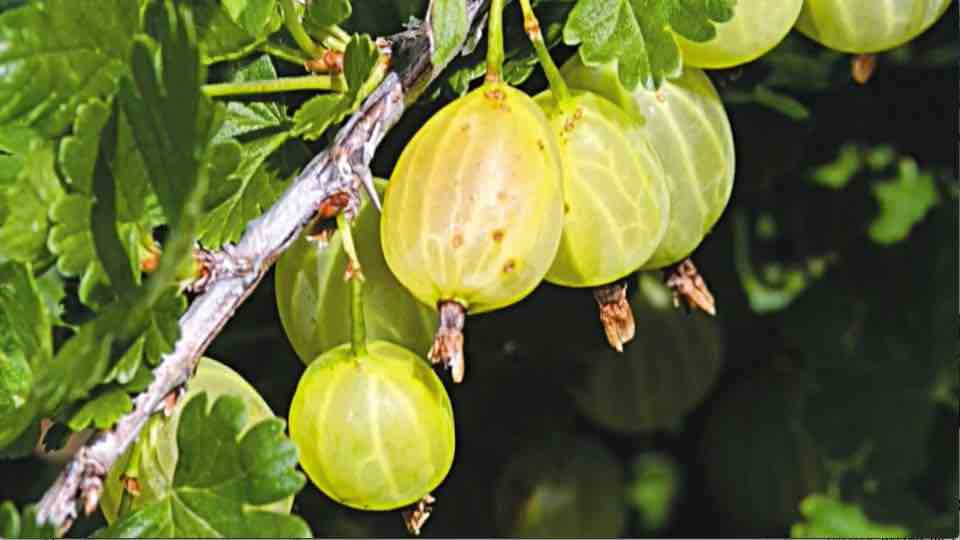
Choose a well-drained planting site with good air circulation. Avoid areas with poor drainage as excessive moisture can contribute to the development of fungal and bacterial infections.
2. Crop Rotation
Practice crop rotation by planting your raspberry, gooseberry, and currant plants in different areas of your garden each year. This helps to disrupt disease cycles and reduce the buildup of pathogens in the soil.
3. Clean Cultural Practices
Maintain cleanliness in your garden by removing fallen leaves, diseased plant debris, and weeds regularly. This eliminates potential sources of infection and creates a healthier growing environment.
4. Pruning and Thinning
Prune your raspberry, gooseberry, and currant plants during the dormant season to remove dead or diseased wood. Additionally, thinning out crowded branches allows better air circulation, reducing the risk of infections.
5. Fertilization and Irrigation
Provide your plants with proper nutrition and irrigation to maintain their vigor and resistance to diseases. Avoid over-fertilization, as excess nitrogen can promote the growth of susceptible foliage.
6. Sanitation
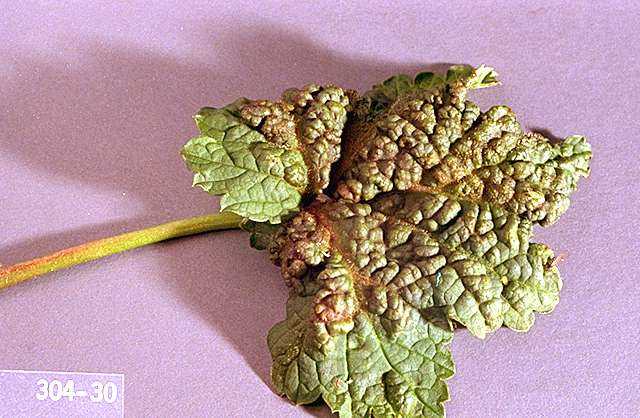
Sanitize your pruning tools between each cut when working on diseased plants to prevent the spread of pathogens. Additionally, clean your equipment and containers regularly to avoid contamination.
7. Planting Disease-Resistant Varieties
Choose disease-resistant varieties of raspberry, gooseberry, and currant plants when available. These varieties have been bred to withstand common diseases and are less susceptible to infections.
8. Monitoring and Early Detection
Regularly inspect your plants for signs of diseases, such as discolored leaves, spots, or wilting. Early detection allows for prompt treatment and minimizes the spread of infections.
9. Biological Controls
Consider using biological controls, such as beneficial insects and fungi, to manage disease-causing pests. These natural predators help to suppress pest populations and reduce the need for chemical interventions.
10. Proper Storage and Disposal
Store harvested berries in cool, dry conditions to prevent the development of post-harvest diseases. Dispose of any infected plant material properly to prevent the spread of pathogens.
By implementing these preventive measures for disease control, you can maintain healthy raspberry, gooseberry, and currant plants and enjoy bountiful harvests.
Steps to Protect Raspberries from Pests
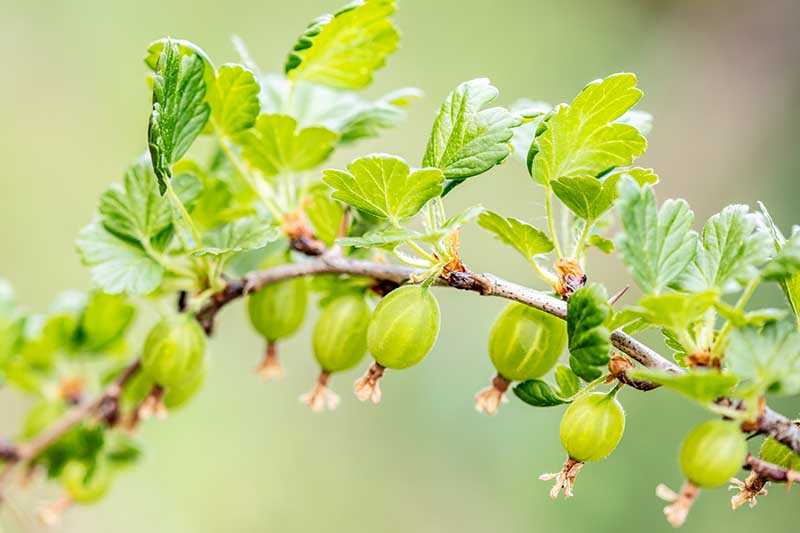
1. Remove debris and weeds around the raspberry plants
Clear the area around your raspberry plants by removing any debris and weeds. This prevents pests from having hiding places and reduces the likelihood of infestation.
2. Prune and thin the raspberry canes
Regularly prune and thin the raspberry canes to promote airflow and reduce the risk of diseases. This also helps in identifying and removing any infected or damaged canes.
3. Monitor for signs of pests
Keep a close eye on your raspberry plants for any signs of pests, such as chewed leaves or holes in the fruits. Early detection can prevent the pests from causing significant damage.
4. Implement physical barriers
Use physical barriers, such as netting or row covers, to keep pests away from your raspberry plants. This is especially important during the fruiting period when the plants are most vulnerable.
5. Use organic pest control methods
Consider using organic pest control methods, such as insecticidal soaps, neem oil, or natural predators, to control pests on your raspberry plants. These methods are safer for the environment and do not harm beneficial insects.
6. Practice good garden hygiene
Practice good garden hygiene by cleaning up fallen fruits and removing any infected plant material. This helps prevent pests and diseases from spreading to other plants in your garden.
7. Rotate crops
Rotate your raspberry plants with other crops every few years to prevent the buildup of pests and diseases in the soil. This disrupts their life cycle and reduces the risk of infestation.
8. Regularly inspect and maintain the plants
Regularly inspect your raspberry plants for any signs of pests or diseases. Remove any infected parts immediately to prevent the spread. Also, ensure the plants are adequately watered and fertilized to maintain their health and resilience.
9. Follow proper harvesting practices
When harvesting raspberries, handle them gently to avoid damage that can attract pests. Harvest ripe berries promptly to prevent overripening and subsequent infestation by pests.
| Pest | Control Measures |
|---|---|
| Japanese Beetles | – Handpick and destroy beetles – Apply a neem oil or insecticidal soap spray – Use a biological control agent like milky spore disease |
| Raspberry Sawfly Larvae | – Handpick and destroy larvae – Use a Bacillus thuringiensis (Bt) spray – Prune off and destroy affected plant parts |
| Raspberry Fruitworms | – Handpick and destroy worms – Use a floating row cover during the fruiting season – Apply a natural insecticide like spinosad |
| Aphids | – Spray plants with a strong jet of water to dislodge aphids – Introduce beneficial insects like ladybugs or lacewings – Use insecticidal soap or neem oil |
Gooseberries: Common Pests and Diseases
Gooseberries are popular fruit bushes that can be susceptible to a range of pests and diseases. Knowing how to identify and treat these issues can help maintain the health and productivity of your gooseberry plants. Here are some common pests and diseases that affect gooseberries:
Pests:
- Aphids: Aphids are small, soft-bodied insects that suck the sap from gooseberry plants, causing leaf curling and distortion. Regularly inspect your plants for aphids and wash them off with a strong jet of water or use insecticidal soap.
- Sawfly Larvae: Sawfly larvae feed on gooseberry leaves, resulting in skeletonized foliage. Handpick the larvae or use biological controls like nematodes or parasitic wasps.
- Gooseberry Moths: Gooseberry moth caterpillars chew holes in gooseberry leaves and fruits. Inspect your plants and remove any caterpillars by hand. You can also use pheromone traps to monitor and control the moth population.
- Red Spider Mites: These tiny pests live on the undersides of leaves, sucking plant fluids and causing yellowing and webbing. Regularly check for signs of infestation and control them with insecticidal soap or predatory mites.
Diseases:
- American Gooseberry Mildew: This fungal disease causes a white powdery coating on leaves, shoots, and fruits. Prune affected parts, improve air circulation, and apply fungicides if necessary.
- Leaf Spot: Leaf spot is a fungal disease that causes dark spots on gooseberry leaves. Remove and destroy affected leaves and apply fungicides to prevent further spread.
- Anthracnose: Anthracnose is a fungal disease that causes brown sunken lesions on gooseberry fruits. Remove and destroy affected fruits and provide adequate spacing between plants for better air circulation.
- Root Rot: Root rot is a fungal disease that affects the roots, causing wilting and stunted growth. Ensure proper drainage and avoid overwatering to prevent root rot.
Regularly monitoring your gooseberry plants, practicing good cultivation techniques, and applying appropriate treatments can help prevent and control pests and diseases, ensuring healthy and productive gooseberry bushes.
Effective Spring Treatment for Gooseberries
Gooseberries are delicious fruits that are highly susceptible to various diseases and pests. To ensure a healthy harvest, it is important to conduct proper spring treatment for gooseberries. Here are some effective methods to protect your gooseberry plants:
1. Pruning
Start by pruning your gooseberry plants in early spring before new growth begins. Remove any dead, damaged, or diseased branches to promote healthy growth. Pruning also helps to improve airflow and sunlight penetration, reducing the risk of fungal diseases.
2. Mulching
Apply a layer of organic mulch around the base of the plants to suppress weeds, retain moisture, and regulate soil temperature. This will create a favorable environment for the plants to thrive and protect against certain pests.
3. Fertilizing
Gooseberries benefit from regular fertilization to ensure optimal growth and fruit production. Apply a balanced fertilizer high in nitrogen, phosphorus, and potassium in early spring. Follow the manufacturer’s instructions for the correct dosage.
4. Disease and Pest Control
Preventive measures are crucial to protect gooseberries from diseases and pests. Monitor plants regularly for signs of common gooseberry ailments such as powdery mildew, aphids, and sawfly larvae.
- Powdery Mildew: If powdery white patches appear on the leaves and shoots, treat the plants with a fungicide specifically formulated for powdery mildew.
- Aphids: Control aphid infestations by spraying the plants with insecticidal soap or neem oil. Alternatively, introduce beneficial insects like ladybugs that feed on aphids.
- Sawfly Larvae: Handpick sawfly larvae and destroy them to prevent damage to the leaves. You can also use biological control methods such as applying nematodes or introducing parasitic wasps.
5. Watering
Proper watering is essential for gooseberries, especially during dry periods. Water deeply and infrequently to encourage deep root growth. Avoid overhead watering to prevent the spread of fungal diseases.
6. Harvesting
Harvest gooseberries when they are fully ripe but still firm. This ensures the best flavor and texture. Regular harvesting also reduces the risk of diseases and pests, as overripe fruits can attract pests and promote the spread of diseases.
By following these effective spring treatment methods for gooseberries, you can protect your plants from diseases and pests, and enjoy a bountiful harvest of delicious berries.
Currants: Diseases and Pests to Watch Out For
Currants are delicious and nutritious fruits that can be enjoyed fresh or turned into tasty jams and desserts. However, like any other plant, currants are susceptible to various diseases and pests that can damage or even kill the plants if not properly managed.
Diseases
1. Powdery Mildew: Powdery mildew is a fungal disease that causes white, powdery spots on the leaves, stems, and fruit of currant plants. It can stunt plant growth and reduce fruit yield. To prevent powdery mildew, it’s important to provide good air circulation around the plants and avoid overhead irrigation.
2. Anthracnose: Anthracnose is another fungal disease that affects currant plants. It causes brown or black lesions on the leaves, stems, and fruit. Proper pruning and removal of infected plant parts can help control anthracnose. Fungicide treatments may also be necessary in severe cases.
3. Rust: Rust is a fungal disease that causes orange or yellow pustules on the underside of leaves. It can weaken the plant and reduce fruit quality. Regular inspection of leaves for signs of rust and prompt removal and destruction of infected leaves can prevent the spread of the disease.
Pests
1. Aphids: Aphids are small, sap-sucking insects that can infest currant plants. They can cause curling and yellowing of leaves, stunted growth, and reduced fruit production. Regularly inspect the plants for aphids and use insecticidal soap or neem oil to control their population.
2. Currant Fruit Fly: The currant fruit fly is a common pest that lays its eggs on ripe currant fruit, causing them to rot prematurely. Regularly monitor the fruit for signs of infestation, such as small puncture holes, and remove and destroy any affected fruits.
3. Sawflies: Sawflies are small caterpillar-like insects that feed on currant leaves. They can skeletonize the leaves and weaken the plants. Handpicking the larvae or using insecticidal sprays can help control sawfly populations.
By being vigilant and taking appropriate measures, you can effectively manage and prevent diseases and pests from damaging your currant plants, ensuring a healthy and bountiful harvest.
Essential Spring Treatment for Currants
Growing currants can be a rewarding experience, but it’s important to provide proper care and treatment to ensure healthy plants and a bountiful harvest. Spring is a crucial time for currants, as it’s when they emerge from their dormant state and begin their active growth. Here are some essential treatments to consider for your currant plants:
Pruning
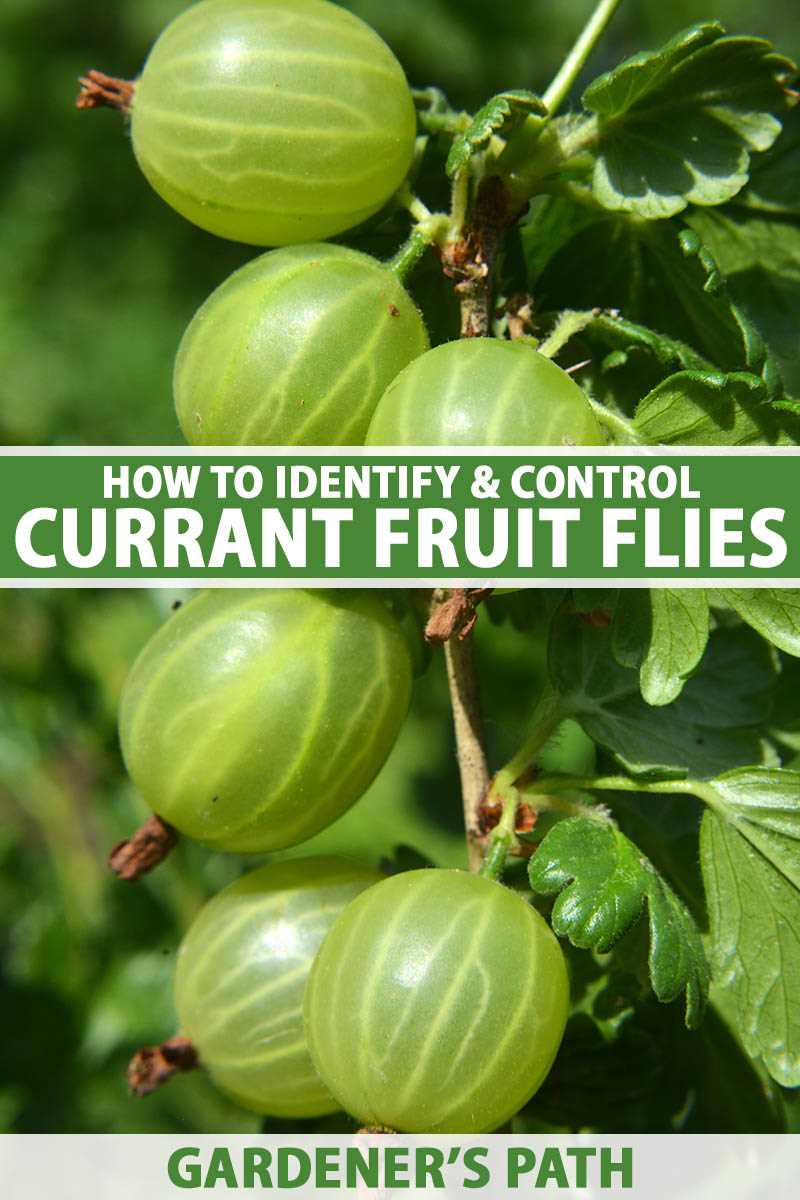
Pruning is an important step in maintaining the health and productivity of currant plants. In early spring, before new growth starts, remove any dead or damaged wood. This helps prevent the spread of diseases and promotes better air circulation within the plant. Thin out overcrowded branches to allow for better sunlight penetration.
Fertilizing
After pruning, it’s important to provide your currant plants with the necessary nutrients for healthy growth. Apply a balanced fertilizer, such as a 10-10-10 or 12-12-12 formulation, according to the package instructions. Spread the fertilizer evenly around the base of the plants and lightly scratch it into the soil. Avoid applying fertilizer too close to the stems or foliage to prevent burning.
Protecting Against Pests
Spring is also a critical time for preventing or managing pest infestations in currant plants. Keep an eye out for aphids, mites, and other common pests. Consider using organic pest control methods, such as insecticidal soaps or neem oil, to manage infestations. Regularly inspect your plants for signs of pests and take action promptly to prevent damage.
Watering
Proper watering is essential for the health and productivity of currant plants. Provide regular deep watering to ensure that the root zone is adequately moist. Avoid overwatering, as this can lead to root rot and other fungal diseases. Mulching around the base of the plants helps retain moisture and suppresses weed growth.
Staking
As currant plants grow, they can become top-heavy and prone to leaning or breaking under the weight of the fruit. To prevent this, consider staking or trellising your currant plants. Use stakes or a trellis system to provide support for the branches and prevent them from sagging or snapping. Tie the branches gently to the stakes or trellis using soft twine or plant ties.
By following these essential spring treatments for currant plants, you can ensure their health and productivity throughout the growing season. Remember to monitor your plants regularly for any signs of disease or pests and take appropriate action to keep them in optimal condition. With proper care, you’ll be rewarded with a bountiful harvest of delicious currants!
Questions and Answers:
What are the common diseases and pests that affect raspberries, gooseberries, and currants in the spring?
Common diseases and pests that affect raspberries, gooseberries, and currants in the spring include powdery mildew, aphids, mites, and fruit worms.
How can I identify powdery mildew on my raspberry plants?
Powdery mildew appears as a white, powdery coating on the leaves, stems, and buds of raspberry plants. It can cause leaf distortion and reduced fruit production.
What can I do to prevent powdery mildew on my gooseberry bushes?
To prevent powdery mildew on gooseberry bushes, ensure proper air circulation by pruning, remove any infected plant material, and apply fungicides as needed.
How do I control aphids on my currant plants?
Aphids can be controlled by using insecticidal soaps, applying neem oil, or attracting natural predators like ladybugs and lacewings to your garden.
What are some methods for managing mites on raspberry plants?
Some methods for managing mites on raspberry plants include spraying them with a strong blast of water, applying insecticidal soap, or using predatory mites as a biological control.
What are the signs of fruit worm infestation on gooseberry plants?
The signs of fruit worm infestation on gooseberry plants include small holes in the fruit, frass (insect excrement) near the holes, and damaged or discolored berries.
How can I prevent fruit worm infestation on my currant bushes?
To prevent fruit worm infestation on currant bushes, you can use insecticides specifically labeled for fruit worms, remove and destroy any infested fruit, and practice good garden sanitation.







